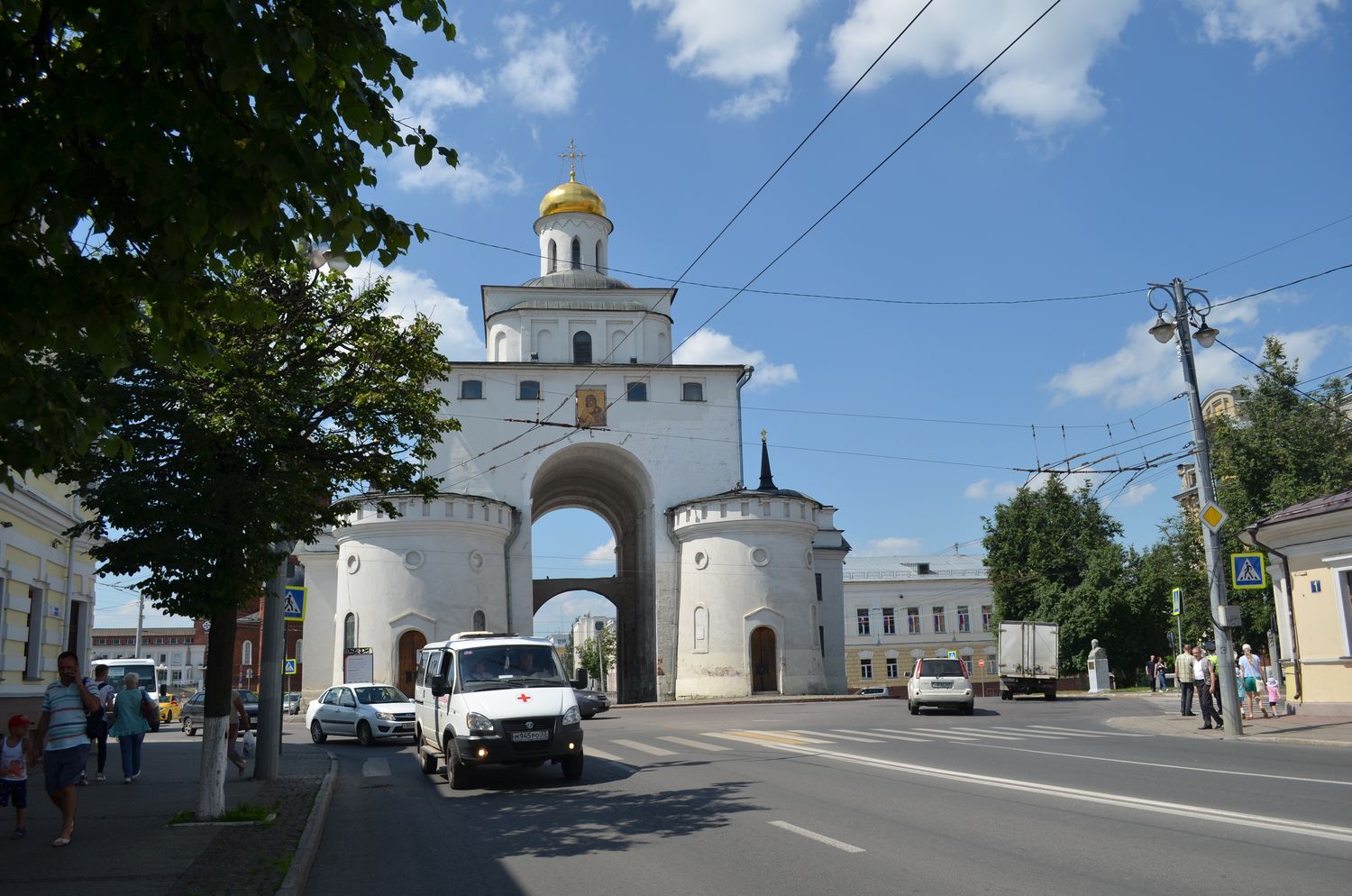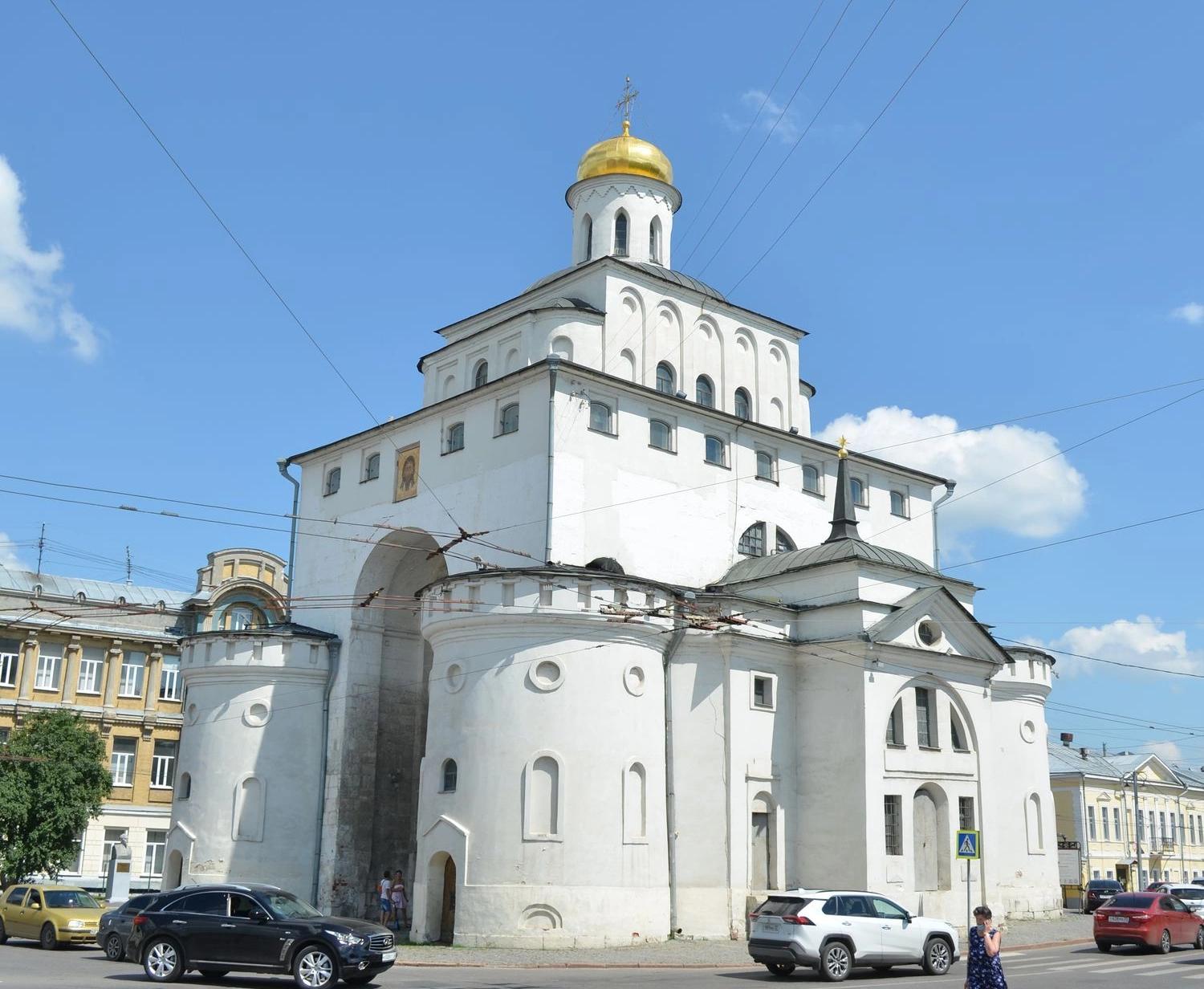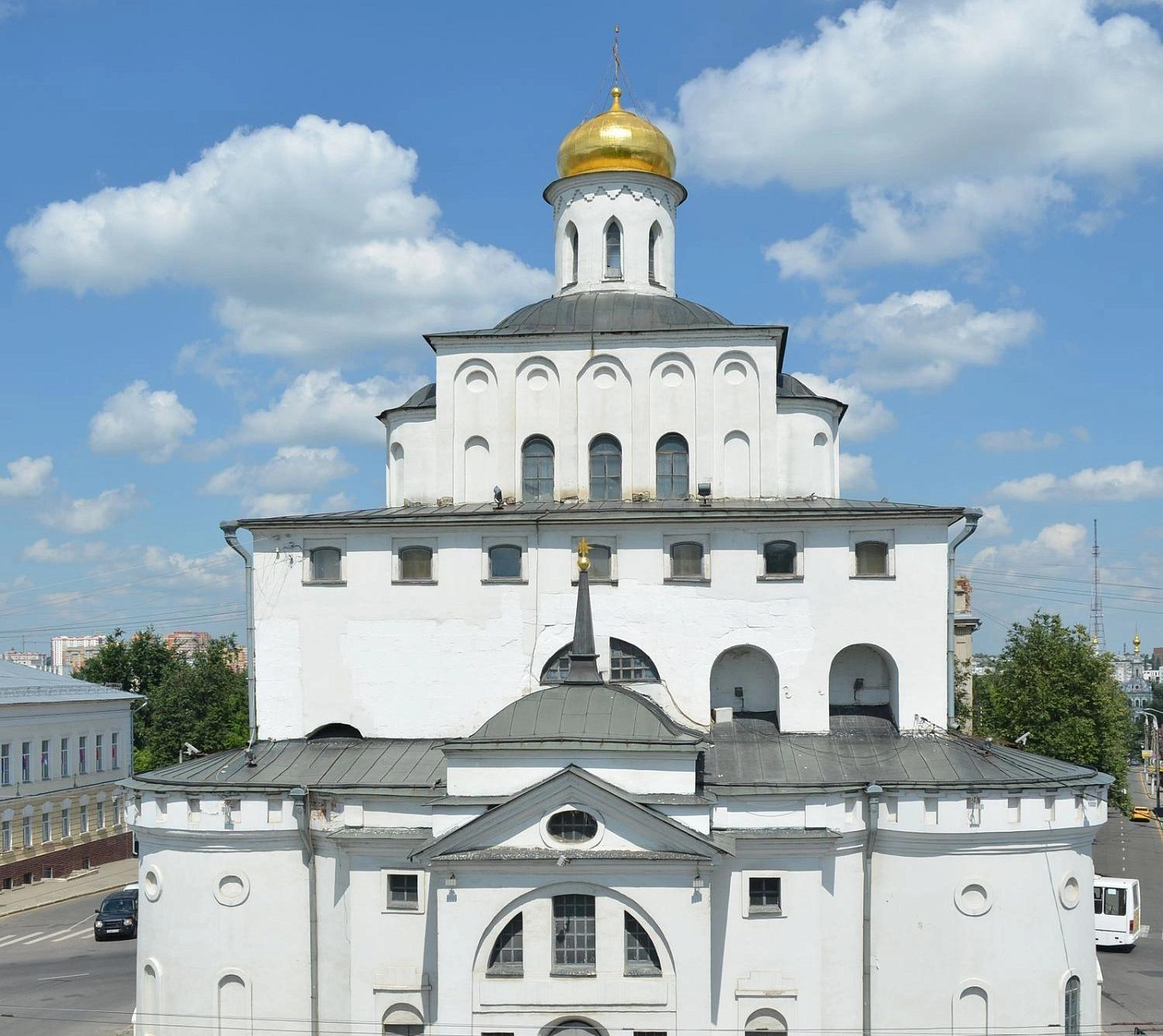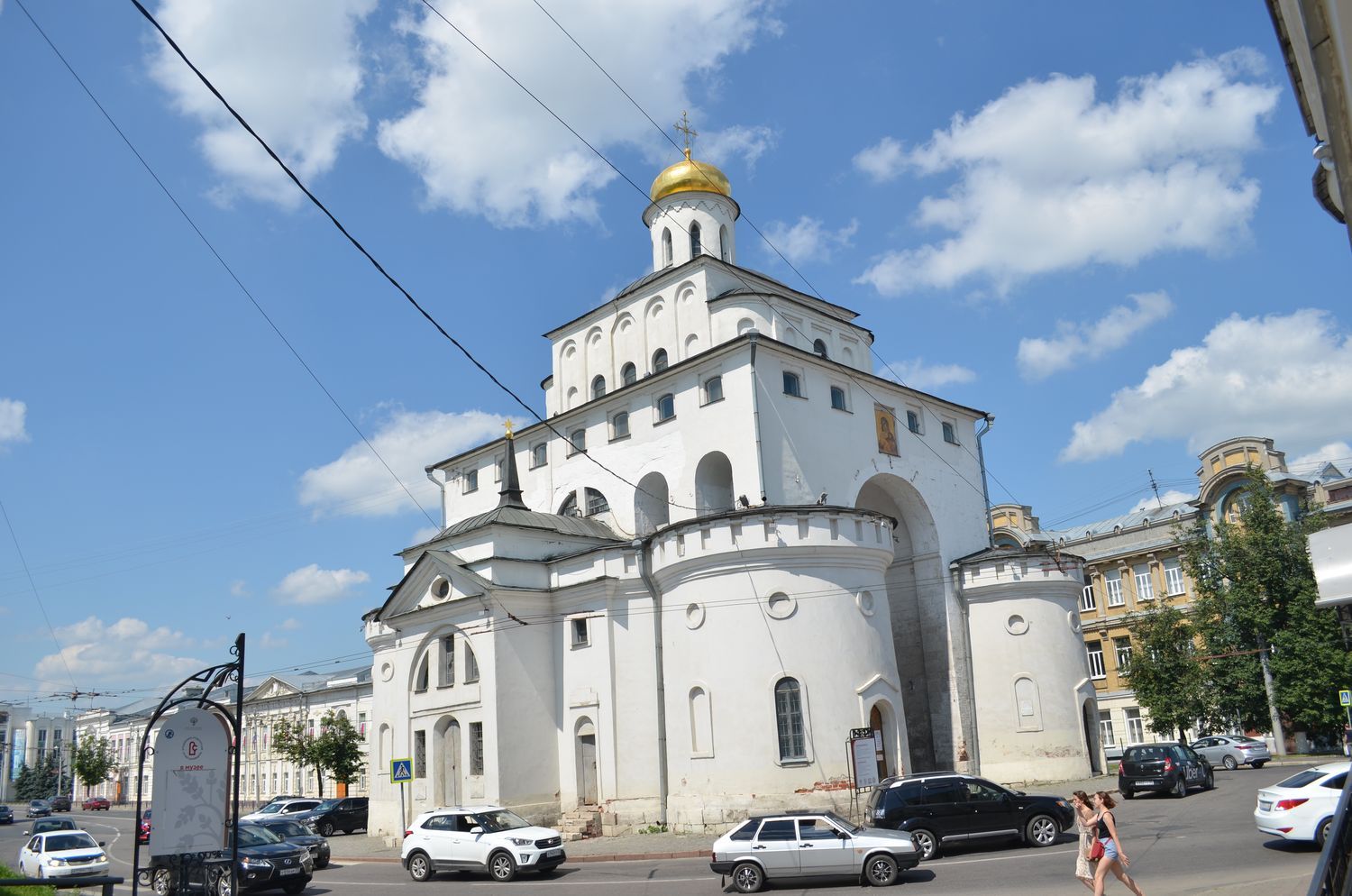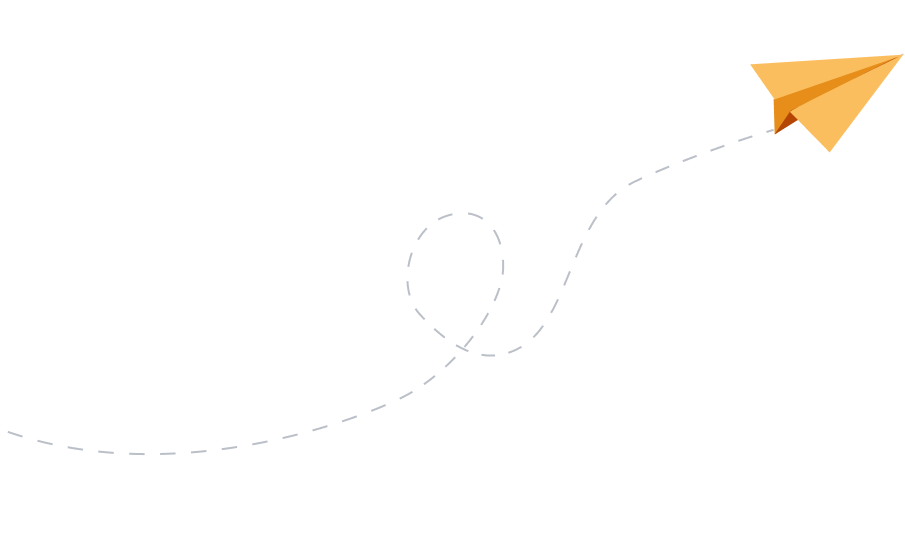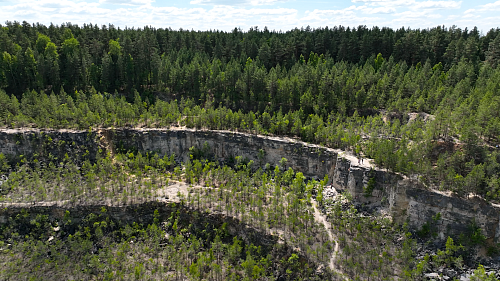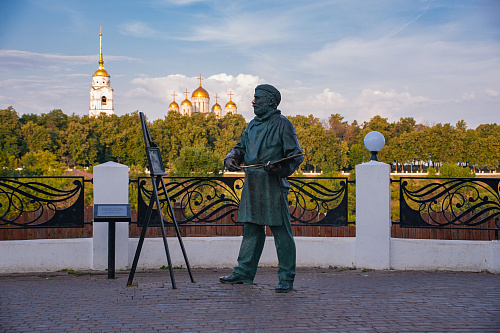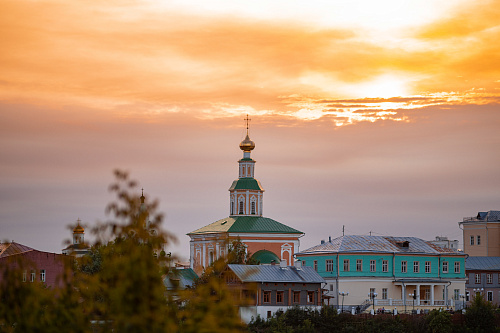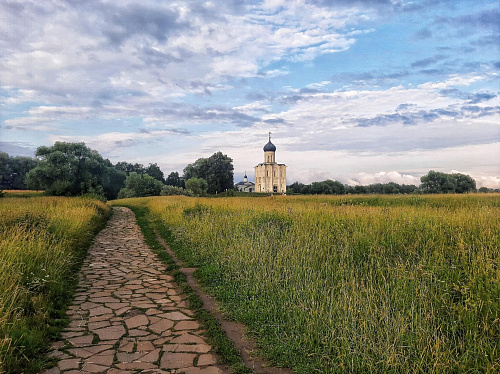Golden Gate
The Golden Gate is a symbol of Vladimir. Built in 1158–1164, it was part of a large complex of defensive structures, including the Silver, Copper, Irina, Volga, Trade, and Ivan Gates, as well as earthworks none of which have survived to the present day. And at the top of the central entrance, there was a small Rizopolozhenskaya Church. On the sides of the gates there were earthworks, the gates were decorated with gilded copper.
1164 год
The Golden Gate is a symbol of Vladimir. The monuments of the civil and defensive nature, which have survived to this day from the ancient times of the 12th century, are present only in Vladimir and its surroundings. That is why the Golden Gate, which served as a defensive structure and the main entrance to the princely city, became the face of the city. Built in 1158–1164, it was part of a large complex of defensive structures, including the Silver, Copper, Irina, Volga, Trade, and Ivan Gates, as well as earthworks none of which have survived to the present day. And at the top of the central entrance, there was a small Rizopolozhenskaya Church. On the sides of the gates there were earthworks, the gates were decorated with gilded copper.
In 1238 Vladimir was attacked by the Mongol invaders led by Batu Khan. But the fortress withstood the attack brilliantly! The invaders were unable to break through the defences of the central gate and were forced to make a passage in the earthwork, which they did only on the eighth day of the siege.
According to the legend, the carriage of the Empress Catherine II got stuck in the arch of the gate and the Empress ordered to make a passage between the gate and the rampart. The gates, no longer supported by the walls, began to collapse. This is how the buttresses that reinforced the gates and the round towers around them were created. The Golden Gate now houses a military history exhibition. In 1992, the Golden Gate, along with other monuments of the Vladimir Rus white stone architecture, was included in the UNESCO World Heritage List.

